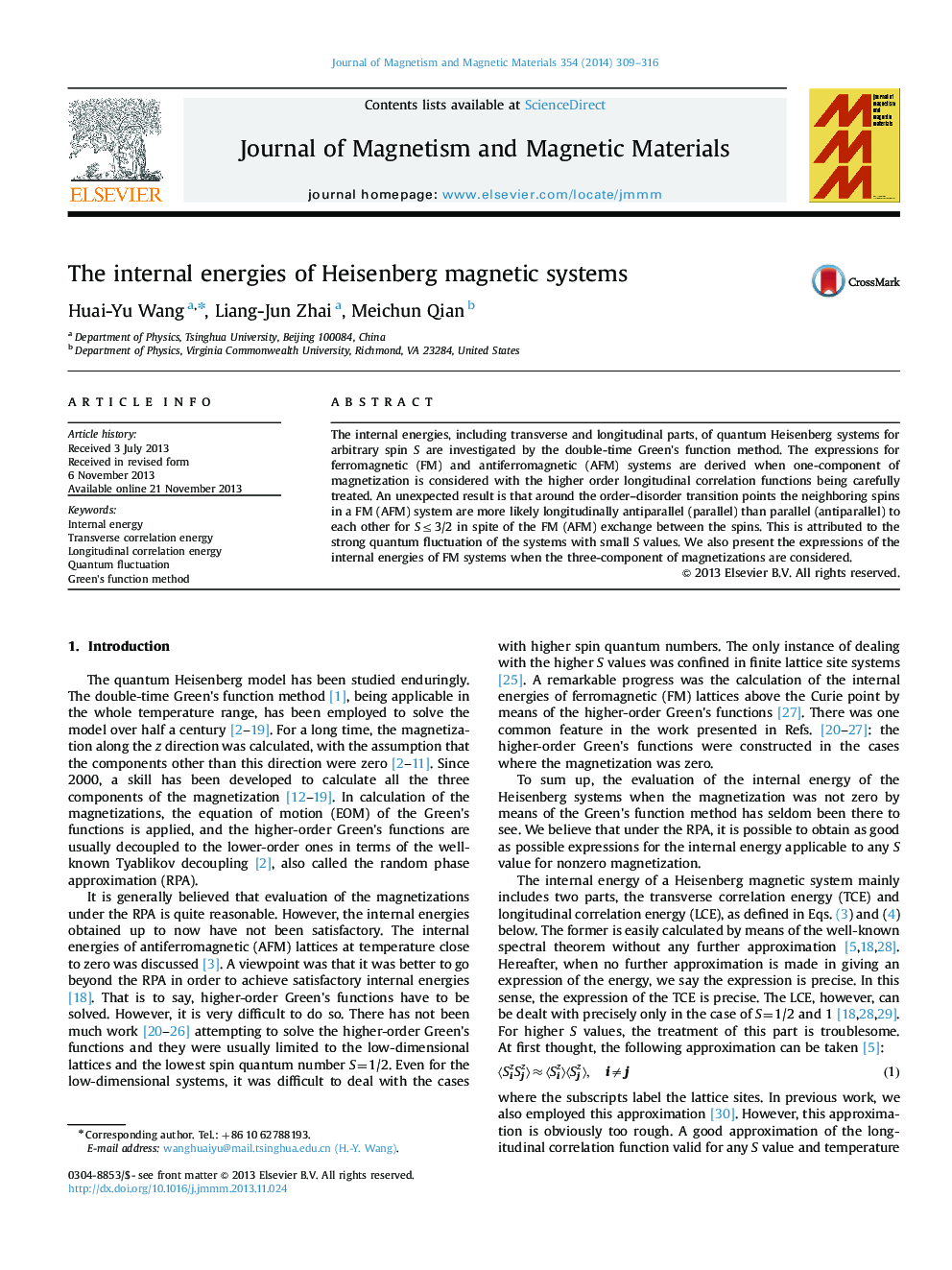| Article ID | Journal | Published Year | Pages | File Type |
|---|---|---|---|---|
| 1799747 | Journal of Magnetism and Magnetic Materials | 2014 | 8 Pages |
•We give the best expressions of the internal energies for Heisenberg magnetic systems.•Around transition temperature, the longitudinal correlation energies for magnetic systems are positive due to strong quantum fluctuation.•A system with smaller spin quantum number has a stronger fluctuation even if there is spontaneous magnetization.•The strong quantum fluctuation cannot be totally suppressed by an external magnetic field.•The expressions of the internal energies when the magnetization has three components are given.
The internal energies, including transverse and longitudinal parts, of quantum Heisenberg systems for arbitrary spin S are investigated by the double-time Green's function method. The expressions for ferromagnetic (FM) and antiferromagnetic (AFM) systems are derived when one-component of magnetization is considered with the higher order longitudinal correlation functions being carefully treated. An unexpected result is that around the order–disorder transition points the neighboring spins in a FM (AFM) system are more likely longitudinally antiparallel (parallel) than parallel (antiparallel) to each other for S≤3/2 in spite of the FM (AFM) exchange between the spins. This is attributed to the strong quantum fluctuation of the systems with small S values. We also present the expressions of the internal energies of FM systems when the three-component of magnetizations are considered.
